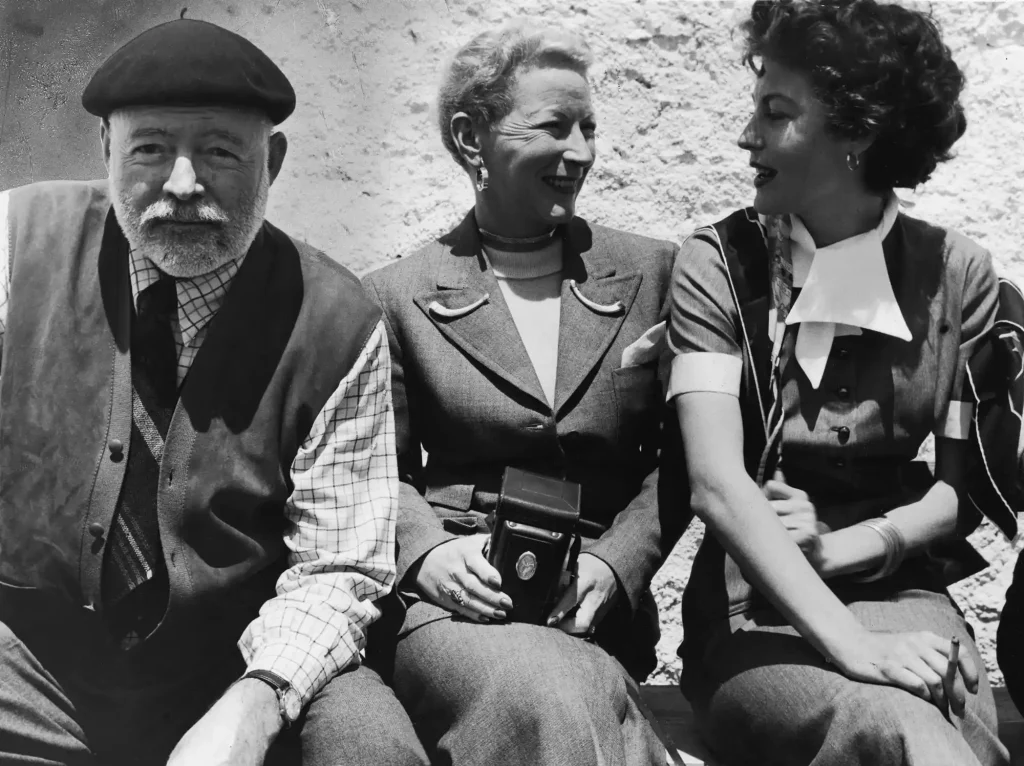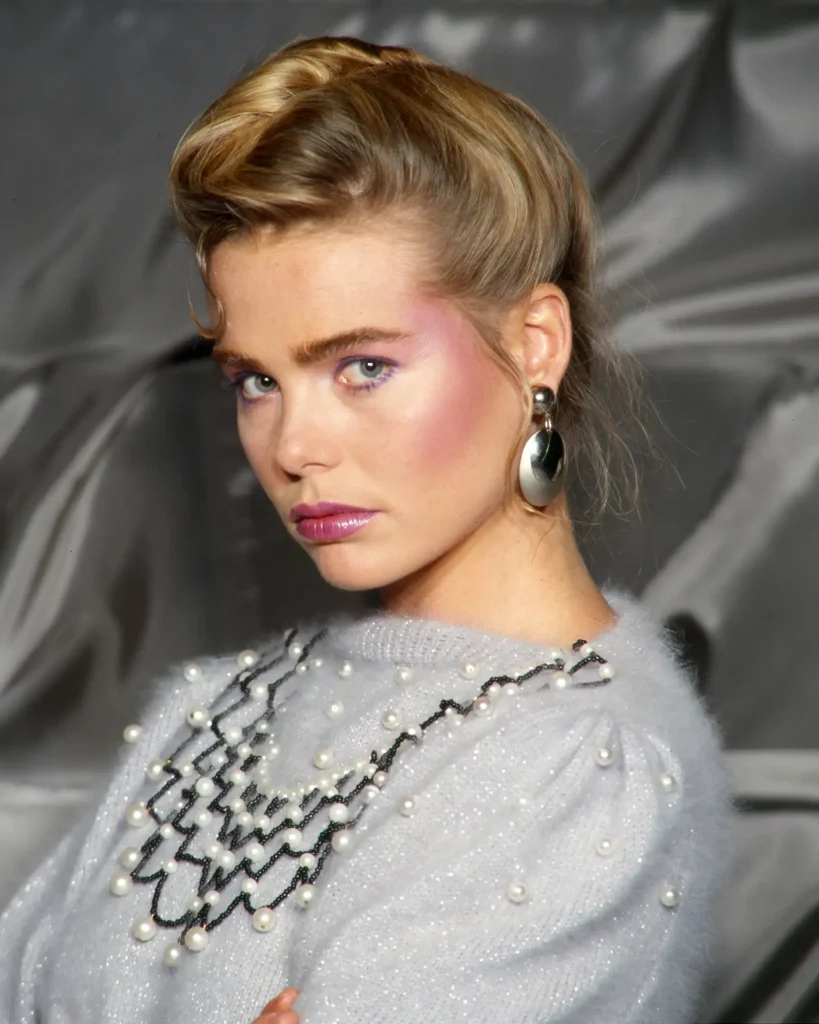The Tragic Story of Margaux Hemingway — The Supermodel Granddaughter of Ernest Hemingway Who Captivated the World Before Her Mysterious Death at 42
Margaux Hemingway was born into a family of brilliance and burden — a dynasty known for its genius, but also for its ghosts. As the granddaughter of literary legend Ernest Hemingway, she inherited not only a famous name but also the intense pressure that came with it. In her early years, she seemed to carry that legacy effortlessly, with her beauty, charisma, and drive propelling her to international fame. Yet, behind the glamour and flashbulbs, Margaux’s life was marked by struggle, heartbreak, and a haunting fate that mirrored her grandfather’s own tragic end.

Margaux Louise Hemingway was born in Portland, Oregon, in February 1954, the daughter of Jack Hemingway, Ernest’s only son, and his first wife, Byra Louise Whittlesey. From the beginning, she was destined for a life under public fascination. Her striking height, bold features, and effortless charm made her stand out, even in her youth. In the 1970s, that natural magnetism translated into a meteoric rise in modeling — an era when fashion icons were becoming global celebrities. Margaux quickly became one of the first true supermodels, long before the term was widely used.
Her breakout moment came in 1975 when she signed an unprecedented $1 million contract with Fabergé to promote their perfume, “Babe.” At the time, it was one of the biggest modeling deals in history. Magazines hailed her as the face of modern beauty, while her radiant energy made her a favorite on talk shows and in high-society circles. Margaux graced the covers of Vogue, Elle, and Cosmopolitan, embodying the free-spirited, golden aura of the decade. Her confidence seemed unshakable — the tall, statuesque blonde with an infectious smile and the Hemingway name to match.
But behind the success, Margaux’s life was far more complex. The same name that opened doors for her also carried a heavy shadow. Ernest Hemingway’s death by suicide in 1961 left a deep scar on the family. His struggles with depression and alcoholism were well-documented, and those same struggles would echo through generations. Margaux often spoke about feeling the weight of that legacy — not only the creative brilliance that defined the Hemingway bloodline but also its darker tendencies toward self-destruction.

As her fame grew, so did her inner battles. Margaux wrestled with alcoholism, depression, and later, epileptic seizures, which she said were the result of a head injury sustained as a child. In interviews, she described feeling disconnected from her glamorous image, saying she often felt like she was playing a role instead of living her own life. “Everyone saw me as the beautiful, perfect girl,” she once said, “but inside, I was falling apart.”
Her early foray into acting was meant to be a fresh start. In 1976, she starred opposite Chris Sarandon in the film Lipstick, where she played a model who seeks justice after being assaulted. The movie was controversial for its subject matter but showcased Margaux’s ability to channel raw emotion on screen. Though the film received mixed reviews, many critics saw potential in her — a young woman trying to prove she was more than a famous last name.
Her sister, Mariel Hemingway, who would later win acclaim for her role in Manhattan, followed her into acting, and the two became one of Hollywood’s most recognizable sister duos. But while Mariel’s career ascended, Margaux’s began to falter. The pressures of fame, compounded by addiction and mental health challenges, led to erratic behavior and professional setbacks.

By the early 1980s, Margaux had begun to withdraw from the spotlight. The once-celebrated model who appeared on the cover of Time magazine found herself struggling to find work. Reports from friends and colleagues suggested that she was battling financial troubles and isolation. Yet, even as her career waned, she remained a compelling figure — deeply introspective and, at times, painfully honest about her struggles.
In the years before her death, Margaux sought to rebuild her life. She reportedly embraced spirituality, explored yoga and holistic health, and attempted to distance herself from the destructive habits that had haunted her. In a 1990 interview, she spoke with a quiet optimism about moving forward: “I’ve been through hell,” she said. “But maybe that’s what it takes to finally start loving yourself.”
However, those who knew her sensed that she was still fighting demons beneath the surface. The Hemingway family’s history of mental illness was something she acknowledged openly. Ernest Hemingway, her grandfather, had taken his own life in Idaho in 1961, and over the years, several of his descendants would tragically meet similar ends. The so-called “Hemingway curse” became a recurring phrase in tabloids, though mental health experts emphasized that what the family faced was not a curse, but likely a genetic predisposition to depression.
On July 2, 1996 — the anniversary of her grandfather’s death — Margaux Hemingway was found dead in her Santa Monica apartment. She was only 42 years old. Reports initially described her death as natural causes, but it was later ruled a suicide by overdose. The news sent shockwaves through the entertainment world. Many who had known her expressed disbelief, while others quietly admitted they had long feared such an outcome.
Her sister, Mariel, who discovered her body, spoke years later about the haunting grief of that day. “Margaux was so full of light, but also so much pain,” she said in interviews and later in the documentary Running from Crazy. “I think she was trying to find peace in a world that didn’t make space for people like her — people who feel too deeply.”
In the wake of her death, Margaux’s life took on an almost mythic quality — a beautiful woman undone by the same internal storms that claimed so many in her lineage. But to remember her only for her tragedy would be to overlook the powerful mark she left on the culture of her time. She was one of the first models to transcend fashion and become a celebrity in her own right. Her image, bold and unforgettable, helped define an era when women were just beginning to take control of their image and their power in the media.
Her story also reignited important conversations about mental health — particularly in industries built on appearance and perfection. In later years, as awareness of depression, addiction, and suicide grew, many pointed to Margaux’s story as an example of how fame often hides silent battles. Her openness about her struggles, even when it was uncommon to discuss such things publicly, became a testament to her strength.
In reflecting on her life, Mariel Hemingway has often said that Margaux’s story is not just one of loss, but also of love — love for life, for beauty, and for meaning. In her 2013 documentary Running from Crazy, Mariel explored the family’s legacy of mental illness and how she chose to confront it differently. “I didn’t want to be another statistic,” she said, noting how Margaux’s death pushed her toward healing and advocacy.
Today, Margaux Hemingway is remembered not just as a supermodel or actress, but as a complex, deeply human woman who carried both the brilliance and the burdens of her family’s legacy. Her death remains one of Hollywood’s most haunting tragedies — not because of its mystery, but because of how familiar it feels. It’s the story of someone who seemed to have everything, yet struggled to find peace within herself.
Nearly three decades later, her legacy continues to resonate — through her images, her interviews, and the people who remember her warmth and vulnerability. Her life serves as both a cautionary tale and a call for compassion: a reminder that behind every glamorous photograph, there’s a person fighting to be understood.
In a world still fascinated by fame, Margaux Hemingway’s story lingers as a beautiful but heartbreaking echo of what happens when the spotlight becomes too heavy to bear. The granddaughter of one of America’s greatest writers left behind her own unspoken story — one written not in words, but in the fragile humanity that connects us all.



